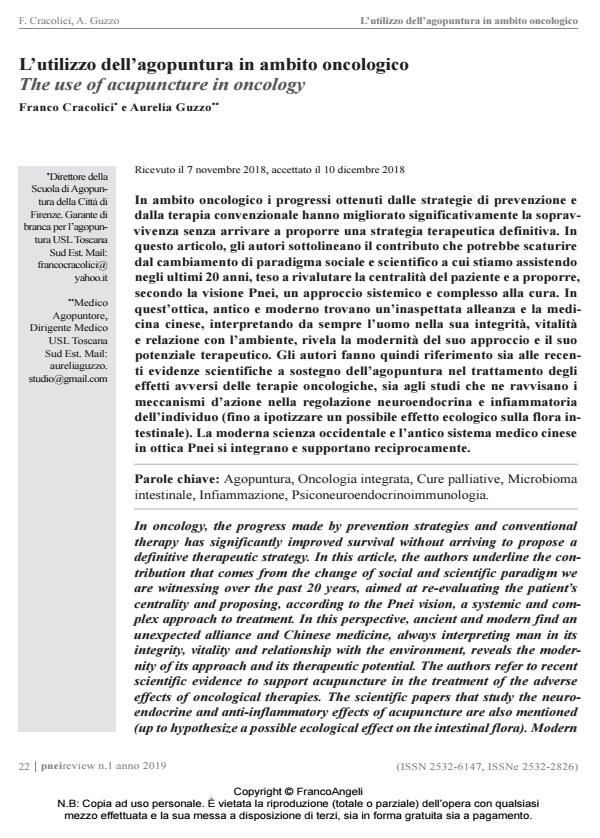The use of acupuncture in oncology
Journal title PNEI REVIEW
Author/s Franco Cracolici, Aurelia Guzzo
Publishing Year 2019 Issue 2019/1
Language Italian Pages 13 P. 22-34 File size 1091 KB
DOI 10.3280/PNEI2019-001004
DOI is like a bar code for intellectual property: to have more infomation
click here
Below, you can see the article first page
If you want to buy this article in PDF format, you can do it, following the instructions to buy download credits

FrancoAngeli is member of Publishers International Linking Association, Inc (PILA), a not-for-profit association which run the CrossRef service enabling links to and from online scholarly content.
In oncology, the progress made by prevention strategies and conventional therapy has significantly improved survival without arriving to propose a definitive therapeutic strategy. In this article, the authors underline the contribution that comes from the change of social and scientific paradigm we are witnessing over the past 20 years, aimed at re-evaluating the patient’s centrality and proposing, according to the Pnei vision, a systemic and complex approach to treatment. In this perspective, ancient and modern find an unexpected alliance and Chinese medicine, always interpreting man in its integrity, vitality and relationship with the environment, reveals the modernity of its approach and its therapeutic potential. The authors refer to recent scientific evidence to support acupuncture in the treatment of the adverse effects of oncological therapies. The scientific papers that study the neuroendocrine and anti-inflammatory effects of acupuncture are also mentioned (up to hypothesize a possible ecological effect on the intestinal flora). Modern Western science (Pnei) and the ancient Chinese medical system integrate and support each other.
Keywords: Acupuncture, Integrated oncology, Palliative care, Intestinal microbiome, Inflammation, Psychoneuroendocrinoimmunology.
Franco Cracolici, Aurelia Guzzo, L’utilizzo dell’agopuntura in ambito oncologico in "PNEI REVIEW" 1/2019, pp 22-34, DOI: 10.3280/PNEI2019-001004